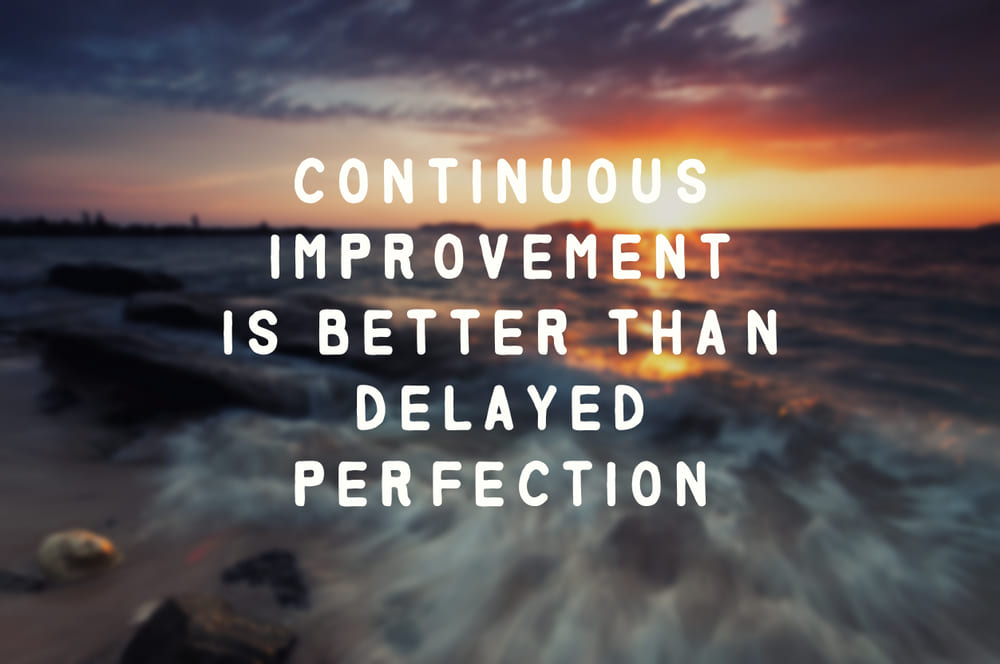Streamlining your Agile methodologies can be daunting, but certain practices stand out for their impact on success. Here, we explore the top 10 best practices of Agile methodologies —each a proven powerhouse in maximizing Agile efficiency and effectiveness. Expect no-frills insights on fostering teamwork, embracing customer feedback, and delivering value. If you’re hunting for tangible, actionable guidance to fine-tune your Agile process, this is where you start. In contrast to traditional project management, such as the Waterfall model with its step-by-step, linear approach, Agile methodologies offer adaptability and efficiency, especially in projects where requirements evolve.
Key Takeaways
- Agile methodologies transform project management with flexible, iterative development and customer-centered practices to rapidly deliver high-value products and adapt to changing needs.
- Essential Agile elements include prioritizing individuals and interactions, customer collaboration, continuous delivery, and welcoming changing requirements to maintain a high-performing, innovative team environment.
- Successful Agile adoption hinges on practices such as embracing iterative development, fostering teamwork, effective communication, and continuous integration, as well as investing in training and supporting self-organizing teams.
The Importance of Agile Methodologies
Shortened versions (agile methods) have had a major impact on project management, especially in software development. Such methods deviate from the old fixed and linear techniques favoring flexibility and adaptability. Agile project management includes frameworks such as Scrum, Lean, XP and Kanban which advocates principles of incremental development, faster product delivery and excellence of the team.
In an agile environment, the enablement of collaborative teams results in quick and incremental improvements that are delivered through fast cycles. The attention is moved to the flexible process which is the main characteristic of agile methodology that allows to easily change the situation and respond to the customer needs.
Agile Benefits
One can enhance their success rate in delivering projects effectively amidst ever-changing business landscapes by embracing Agile’s benefits for project managers: rapid delivery in the scale of the product together with the iterative development processes based on continuous improvement principles undefined. Whereas many traditional practices are centered around structured models like Waterfall (a legacy now).
Agile is based on keeping the customers involved throughout the life cycle journey making sure that their satisfaction levels are high driven solely by the fact that the products developed are in line with the set expectations making this impact much more than just fast delivery.
Engaging stakeholders together with the side-by-side coupling of Iterative Development practices are fundamentally built-around cross-functional collaboration principles aligned across developing quickly evolving release-based working framework – creating innovative solutions hard-wired into automated regression testing whilst building out new code functionality ready-to-ship when immediate sprint cycle completed serving multiple interests both end-users/agencies behind your competitors back driving extra lower level resource efficiencies compared typically burdensome undefined.
One of the most important benefits that successful adoption of SME is Accelerating Product Delivery, highly desired competitive KPI outcomes continually improved embedding Customer Satisfaction Principles usually entails trade-offs in long-term deliverables.
Further Reading: Key Benefits of Agile Project Management Consultancy Services at PMtech Digital Solutions
Essential Elements of Agile Methodologies
At the core of Agile methodologies are its fundamental principles, which prioritize:
- human interaction and communication over following rigid processes and relying on tools
- forming projects around motivated individuals
- being open to changing requirements at any point during development
- continuously delivering valuable software products.
Adaptability, which is one of the core elements of Agile practices, is a part of the process that is always changed and improved so that customer satisfaction would be achieved at the end of the day. Healthy partnership is also another essential element in implementing these practices. In an agile team, each member comes up with their skill set and viewpoint, which helps in the success of the project. This culture of collaboration puts equal worth on all ideas and voices making the collective intelligence work for innovation.
Agile teams implement various strategies such as:
- Cross-functional software development teams.
- Daily stand-up meetings.
- Regular feedback sessions.
- and iterative development approaches.
The approaches allow the development of a harmonious working environment together with the effective work flows. In addition, this promotes ownership among the team members, thus, making them highly performing agile teams.
Collaborative Team Culture
Agile methodologies seek to promote the culture of effective teamwork which in turn, allows for sustainable improvement in software development processes to a level where customers are satisfied. A member of an agile team carries professional responsibility towards each other, grows together and strengthens relationships with each other, thus benefiting the growth of other professionals involved.
Moreover, application of these methods also results in the collaborative environment of the organization in the course of which ideas are exchanged by all participants thus, through their adaptive nature of both decision-making and solution implementation, organizations’ innovation is driven forward. Integral is also developing a successful collaborative teams around this dynamic approach, in order to achieve the long-term business objectives in the complex and rapidly changing market conditions.
The great importance will be attached to flexibility, as it will help to respond fast to possible alterations, and possess the desire and act requirements to members of the team aimed at increasing the general quality of every project. Teamwork, thus, is an important for gaining a trust of a customer in the long term while pursuing a continuous improvement in all areas of operational.
Such practices show that agile methodologies do not only aim at developing efficient systems but also utilize the human resources. The significance of the development team in Agile methods cannot be overlooked where their cross-functional skills along with collaboration are central in the Agile projects success.
Top 10 Best Practices for Successful Agile Methodologies
Even though agile methodologies are tolerant and adaptable, they still need a systematic method to work. This is done by the utilization of best practices, which act as a roadmap leading agile teams to succeed. These best practices are not abstract ideas but operational plans which have been tried and tested in real life situations.
Every best practice has a particular role to play in the process of Agile, starting from maintaining work in Sync and fostering customer collaboration to promoting communication and implementing continuous integration. Let us further analyze the top 10 best practices that augment delivery and performance in Agile methodologies.
1. Embrace Iterative Development
The core practice of agile methodologies is the iterative nature of the development. The approach of this technique is to decompose a system into smaller and more manageable parts that are developed in small iterations or cycles. Every iteration is treated as a complete software project including all tasks required for delivering new functionality.
All the necessary activities associated with a particular iteration are planning, requirements analysis, design, coding testing and documentation. This way, agile software development teams maximize the value of the products by constantly improving and adapting to changing requirements.
Every iteration involves a number of processes including the requirement planning, product development cycle and a series of software testing’s resulting in an incremental release with constant feedback integration leading towards continuous improvement.
The flexibility of iterative development is what makes it so efficient as it enables smooth adjustments in response to market changes or client requirements that will ensure the product stays valuable.
2. Prioritize Customer Collaboration
Agile methodologies put great effort on customer collaboration. This requires that there exists a free-flowing and continuous communication with the customer to match their needs and demands. In this way, a strong working relationship would be developed thus leading to the success of the project.
Consistent communication and collaboration with customers throughout the development process is essential to achieve the highest levels of customer satisfaction. This embraces explicit definition of the requirements, customer participation in the continuous negotiation with the agile team, and collective seeking for the answers. Through the commitment to the understanding and satisfaction of customer needs within its approach to development.
Agile methodologies have been successful in production of products that not only meet but exceed the client’s expectations.
3. Foster Teamwork and Cross-Functional Skills
The effectiveness of Agile methodologies is largely based on the teamwork and multitalented skills available in all team members. A diverse team which combines people of differing expertise stimulates innovation, effectiveness, and open-mindedness. The cross-functional competences are a key driver of agility through enabling such approaches as collectively made decisions, creativity and search of original solutions.
In promoting cross-functional capabilities in Agile teams, several approaches can be utilized including skills analysis assessments and knowledge-sharing sessions to enable learning among team members. Adding up new members to the team would also improve the team’s skills and culture to grow.
In a setting that encourages teamwork and constant learning from one another, as in agile organizations. It helps them to complete difficult assignments much faster in the process of which the highest quality outputs are delivered.
4. Encourage Effective Communication
The significance of the communication is high in implementation of Agile methodologies. This is the team ́s unifying factor which makes free flow of ideas and information possible. Successful communication fosters teamwork, trust, and clarity of project needs and objectives.
The communication within the team of the Agile must be strong, what is accomplished by successful patterns recognition, trust building among the members and the open dialogue promotion. Every individual should feel free to state the view points in order the voices of every person would be valued. Agile methodologies foster unanimity in the team through continuous feedback exchanges.
5. Implement Continuous Integration and Test-Driven Development
Continuous integration and test-driven development represent two vital approaches of Agile methodologies aimed to preserve code quality and minimize technical debt. This process includes regular integration of the code changes into the common repository, which enables the early detection of probable problems.
One of the major methodologies in enhancing software quality while at the same time improving efficiency in the development process is the test-driven development. The system operates by writing tests before coding itself, which helps in cost reduction of projects, better return on investment, improved code standards, and easy debugging/maintenance processes. Thus, it enhances product speed.
Utilizing these practices in the workflow of their agile teams, organizations can guarantee the quicker time-to-market of high-quality products that satisfy the customer. This is why C.I & TDD appear to be great approaches that one should follow to get what he wants.
6. Utilize Visual Management Tools
Visual management tools are an invaluable asset for Agile teams in the form of a visual presentation of the team’s workflow. This facilitates monitoring of progress and identification of any possible challenges or setbacks in the process. Some of the examples are Kanban boards, Jira Software, Monday.com.
Through the integration of visual management tools in their operation processes, a team will improve effectiveness and productivity as the team will have visual cues of the activity at hand and, therefore, perform better. The monitoring of the progress of task becomes more simplified with these visual cues that identify the parts where work may be piling up or getting stalled. Such facilitates timely problem-solving in order to enhance the general workflow performance.
7. Focus on Delivering Value
Agile methodologies are targeted to provide value rather than finishing the tasks. Source driven. This means the emphasis is on delivering valuable features or functionality to the customers, and the stakeholders as well, frequently and also seeking fast feedback. It implies that all the works are related to the purpose, general goals and objectives of the project.
Agile methods determine task importance by prioritizing product business value delivery, reviewing measurable team performance metrics, and focusing on useful customer incremental developments. Using these approaches, agile teams can successfully understand what is valuable to both their clients and productive to their organizations.
By focusing on value delivery through continuous customer satisfaction, and by developing products that are designed to meet their needs with the help of effective teamwork performance approaches. Agile squads create a team spirit among them.
8. Adapt and Improve through Regular Retrospectives
Agility and refinements are among the main principles of agile methodologies. Agile teams are supposed to conduct regular reflections on their performance and based on the outcome make adjustments to their processes and practices. This is achieved through periodic retrospectives, in which the team reviews the iteration, identifies improvement actions, and shares both successful and unsuccessful parts of the process.
Retrospectives provide a safe space for acknowledging not only the things that are working well, but also the areas that need to be improved. They highlight the recurrent nature of Agile and the process improvements desired to enable software products delivery. Regular retrospectives help Agile teams to always improve their performance and stay in line with customer expectations, as well as delivering high-quality products.
9. Support Self-Organizing Teams
Self-organization teams are one of the main components in Agile methodologies. They do not need outside control but develop their own strategies on task management and utilize them to work timely. This enables much more attention to be given to problem solving and value delivery within projects.
Implementing self-organizing teams requires certain factors to be in place: Members of the team have to be motivated to feel supported and trusted. They should also be granted independence in planning work tasks and measuring results. A culture of trust, cooperation, and empowerment alongside the successful communication between the members of a team is the key for success.
In general, self-organizing teams help increase the efficiency of the project management as time for traditional ways of controlling the steps is reduced, leaving more place for the team to innovate and produce the results. The critical elements listed – motivation, support, trusting relationships, freedom, altogether work at a common cause of the organization to create an empowered, collaborative and efficient creative environment that would help in achieving goals prescribed by agile methodologies.
10. Invest in Training and Mentoring
Agile methods depend largely on the giving of education and direction to team members. This enables them to develop their skills, speed up the process of learning and development, gain confidence, and become more effective within the team. Through investment in lifelong learning and skill improvement for their Agile teams, organizations can ensure that their teams are always aware of the industry best practices for maximum performance.
Mentorship presents itself as a form of personal development, experienced gaining and professional development practice of individuals, helping them to attain the desired experience in a guided manner and culminating into their goals. Recommended programs to learn how to implement agile methodologies include PMI-ACP certification course and programs such as AgilePM Foundation certification program, Certified ScrumMaster workshop, and online courses like Agile Sales Management or Design Thinking available on platforms like Udemy.
Tips for Implementing Agile Best Practices in Your Organization
For Agile methodologies to be effectively incorporated into your organization, a strategic approach is crucial. This commences with getting stakeholders on board by actively participating in the presentations and seeking information from them. It also requires the inclusion of them in feature prioritization.
Taking small steps to implement Agile methods can be very successful. This could involve increase flow efficiency, managing queues rather than deadlines, and obtaining management’s support to agile principles.
Establishing a culture, which encourages passion and cooperation, is one of the key elements of Agile practice adoption. One has to choose the right agile framework very carefully which should comply with both team requirements and project context.
Further Reading: Mastering Agile Methodologies: Ultimate Guide To Transformative Project Management
Summary
All in all, Agile methodologies provide a plastic and resilient domain which in turn increases productivity, streamlines team effectiveness, and generates value to the clients. By using agile best practice such as iteration development, co-creation, clear communication patterns, continuous integration processes, firms can achieve outstanding results and remain competitive in a dynamic and always changing business environment.
Frequently Asked Questions
What are the successful techniques of agile?
Agile successful techniques include small teams, short iterations, rapid customers’ feedback, value-based business priorities, and users for requirements refinement.
It is the values and guiding principles for how people work together that make Agile methods durable.
What is the most popular agile practice?
The majority of agile approaches are based on Scrum, which is defined by time-boxed sprints and clear roles within the team. There is no doubt that it is the most popular framework which serves as a foundation to the Agile methodology.
Which of the following could be considered agile best practices?
Best practices are paramount for agile teams and include practices such as continuous integration, test-driven development and regular retrospectives. Such actions can add to the efficiency of the workflow of an agile team and its general success.
What are the benefits of Agile methodologies in project management?
Agile methodologies offer flexibility, adaptability, efficiency in project management, prioritize customer needs, reduce waste, improve quality, mitigate risk, and foster effective communication.
These benefits contribute to successful project outcomes.
What are the essential elements of Agile methodologies?
Agile methodologies’ core aspects are people and interactions, working software, customer collaboration, and response to change over processes and tools, documentation, contract negotiation, and rigid planning. This method focuses on flexibility and customer participation.










